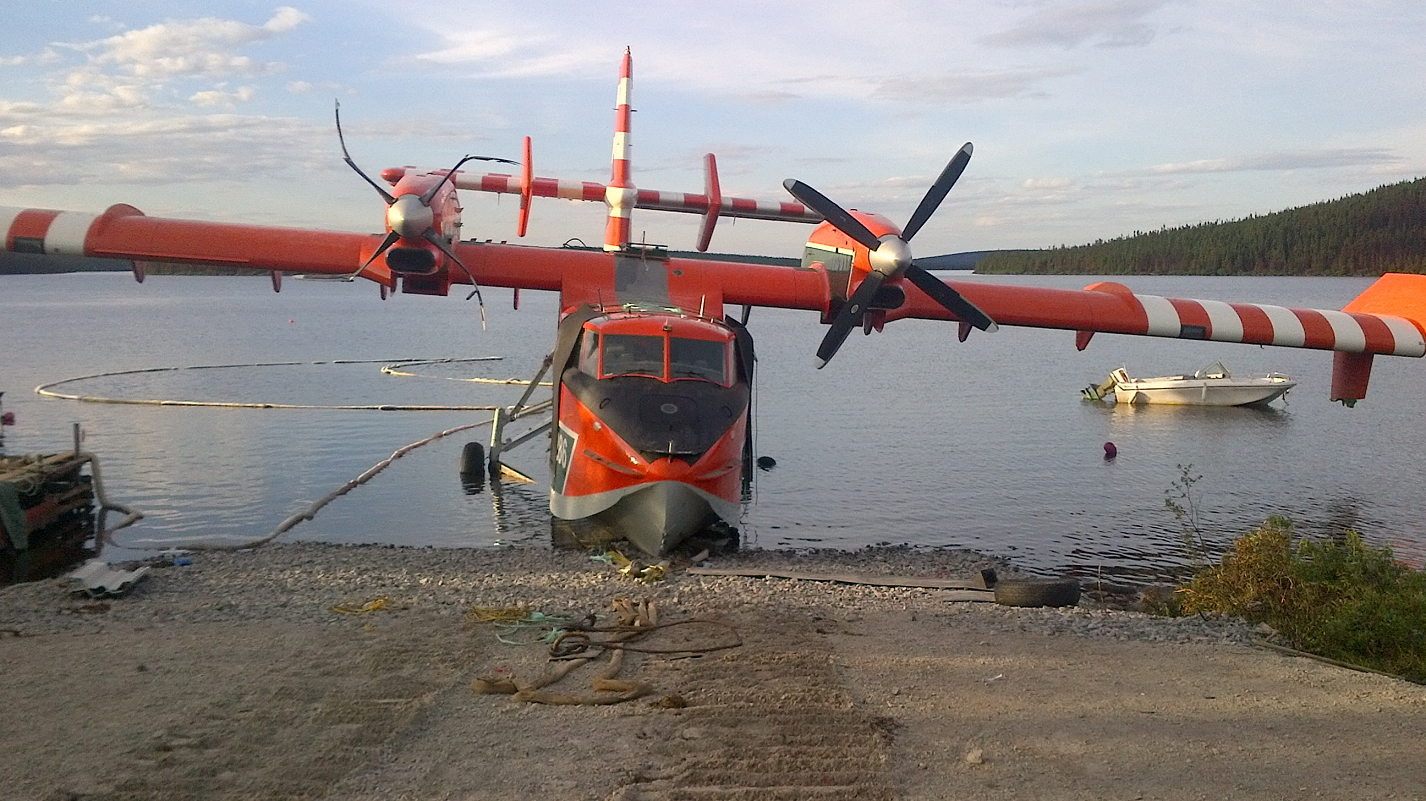Loss of control and collision with water
Government of Newfoundland and Labrador
Air Services Division
CL-415, C-FIZU
Moosehead Lake, Newfoundland and Labrador
The occurrence
On , at about 1415 Atlantic Daylight Time, the Government of Newfoundland and Labrador Air Services Division Bombardier CL-415 amphibious aircraft (registration C-FIZU, serial number 2076), operating as Tanker 286, departed Wabush, Newfoundland and Labrador, to fight a nearby forest fire. Shortly after departure, Tanker 286 touched down on Moosehead Lake to scoop a load of water. About 40 seconds later, the captain initiated a left-hand turn and almost immediately lost control of the aircraft. The aircraft water-looped and came to rest upright but partially submerged. The flight crew exited the aircraft and remained on the top of the wing until rescued by boat. There was an insufficient forward impact force to activate the onboard 406-megahertz emergency locator transmitter. There were no injuries to the 2 crew members. The aircraft was destroyed. The accident occurred during daylight hours.
Media materials
News release
Overloading a central cause of 2013 water bomber accident on Moosehead Lake, Newfoundland and Labrador
Read the news release
Investigation information
Download high-resolution photos from the TSB Flickr page.
Class of investigation
This is a class 3 investigation. These investigations analyze a small number of safety issues, and may result in recommendations. Class 3 investigations are generally completed within 450 days. For more information, see the Policy on Occurrence Classification.
TSB investigation process
There are 3 phases to a TSB investigation
- Field phase: a team of investigators examines the occurrence site and wreckage, interviews witnesses and collects pertinent information.
- Examination and analysis phase: the TSB reviews pertinent records, tests components of the wreckage in the lab, determines the sequence of events and identifies safety deficiencies. When safety deficiencies are suspected or confirmed, the TSB advises the appropriate authority without waiting until publication of the final report.
- Report phase: a confidential draft report is approved by the Board and sent to persons and corporations who are directly concerned by the report. They then have the opportunity to dispute or correct information they believe to be incorrect. The Board considers all representations before approving the final report, which is subsequently released to the public.
For more information, see our Investigation process page.
The TSB is an independent agency that investigates air, marine, pipeline, and rail transportation occurrences. Its sole aim is the advancement of transportation safety. It is not the function of the Board to assign fault or determine civil or criminal liability.
